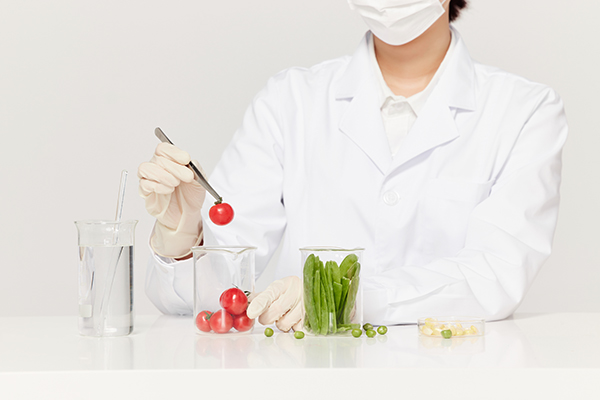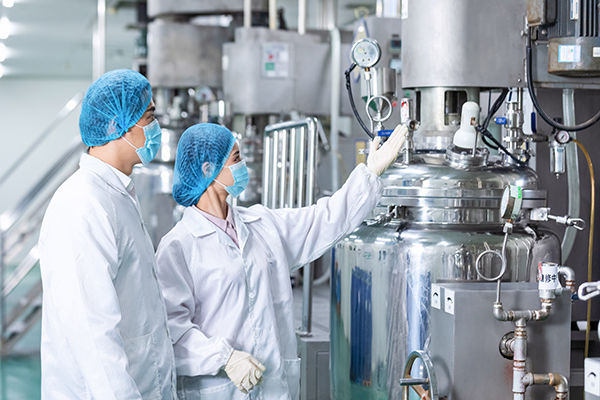1、 What is chemical raw material
There are many types of chemical raw materials with a wide range of uses. There are as many as 5-7 million types of chemicals worldwide, with over 100000 sold and circulated in the market. Additionally, over 1000 new chemicals are introduced each year, of which 150-200 are considered carcinogens.
2、 Types of chemical raw materials
1. Chemical raw materials can generally be divided into two categories based on their material sources: organic chemical raw materials and inorganic chemical raw materials.
(1) Organic chemical raw materials
It can be divided into alkanes and their derivatives, alkenes and their derivatives, alkynes and their derivatives, quinones, aldehydes, alcohols, ketones, phenols, ethers, anhydrides, esters, organic acids, carboxylates, carbohydrates, heterocycles, nitriles, halides, amides, etc.
(2) Inorganic chemical raw materials
The main raw materials for inorganic chemical products are chemical minerals such as sulfur, sodium, phosphorus, potassium, calcium (see inorganic salt industry), as well as coal, oil, natural gas, air, water, etc. In addition, many by-products and wastes from industrial sectors are also raw materials for inorganic chemicals. For example, in the coking production process of the steel industry, coke oven gas contains ammonia that can be recovered into ammonium sulfate using sulfuric acid. The sulfur dioxide in the smelting exhaust gas of chalcopyrite, galena, and sphalerite can be used to produce sulfuric acid.
2. According to the production process, it can be divided into starting materials, basic materials, and intermediate materials
(1) Starting materials
The starting materials are the materials required for the first step of chemical production, such as air, water, fossil fuels (i.e. coal, oil, natural gas, etc.), sea salt, various minerals, agricultural products (such as starchy grains or wild plants, cellulose containing wood, bamboo, reeds, straw, etc.).
(2) Basic raw materials
The basic raw materials are obtained by processing starting materials, such as calcium carbide and various organic-inorganic materials listed above.
(3) Intermediate raw materials
Intermediate raw materials, also known as intermediates, generally refer to products produced from basic raw materials in complex organic chemical production, but they are not yet the final application products and require further processing. For example, various organic compounds used in the production of dyes, plastics, and pharmaceuticals, such as methanol, acetone, vinyl chloride, etc.
3、 Safe operation of commonly used chemical raw materials
Precautions during the use of styrene
1. Storage: Store in a sealed and cool place. It is not recommended to store inventory for a long time or in large quantities with a temperature of ≤ 30 ℃.
2. Precautions for operation: The closed operation should have good ventilation, and the operator should protect the parts that come into direct and indirect contact with styrene. The operator should wear a filter type gas mask (half face mask), chemical safety goggles, work clothes that prevent toxic substances from penetrating, and rubber oil resistant gloves. Keep away from sources of fire and heat, and smoking is strictly prohibited in the workplace. Handle with care during transportation.
3. Fire fighting method: extinguishing agent, foam, dry powder, carbon dioxide, sand. Using water to extinguish the fire is ineffective.
Precautions during the use of acetone
1. Storage: Sealed and stored in a cool place. Inventory temperature ≤ 29 ℃.
2. Precautions for operation: Close operation with good ventilation to reduce skin contact and inhalation of acetone. Operators wear filter type gas masks (half face masks), chemical safety goggles, and butyl rubber gloves.
3. Fire fighting method: extinguishing agent, insoluble foam, dry powder, carbon dioxide, sand. Using water to extinguish the fire is ineffective.
Precautions for the use of industrial methyl ethyl ketone
1. Storage: Methyl ethyl ketone should not be exposed to sunlight, isolated from fire, and labeled with flammable, toxic and dangerous signs on the bucket.
2. Precautions for operation: Sealed operation with good ventilation. Smoking is strictly prohibited in the work site. Pay attention to personal hygiene and cleanliness. Avoid long-term repeated exposure. If necessary for work, safety goggles, self-priming filter gas masks, anti-static work clothes, and latex gloves should be worn.
3. Fire fighting methods: insoluble foam, dry powder, carbon dioxide, sand. Using water to extinguish the fire is ineffective.
Precautions during the use of acetylacetone
1. Storage: Low temperature sealed storage, away from open flames or oxidants.
2. Precautions for operation: The operation should be conducted in a closed environment with good ventilation. There should be no open flames on the work site. When working, safety goggles, self-priming filter gas masks, anti-static work clothes, and latex gloves should be worn.
3. Fire fighting methods: extinguishing agent, atomized water, foam, dry powder, carbon dioxide, sand. Firefighters must wear gas masks and full body firefighting suits, and extinguish fires in the upwind direction.
Precautions for the use of dimethylaniline
1. Storage: Sealed storage in a cool and ventilated place, away from sources of fire and heat.
2. Operation precautions: Closed operation, provide sufficient local exhaust. Operators must undergo specialized training and strictly adhere to operating procedures. It is recommended that operators wear filter type gas masks (half face masks), chemical safety goggles, work clothes that prevent toxic substances from penetrating, and rubber oil resistant gloves. Avoid contact with acids and halogens. Handle with care during transportation to prevent damage to packaging and containers.
3. Fire fighting method: use fog water, foam, carbon dioxide, dry powder and sand to extinguish the fire.
Precautions for the use of butanone peroxide
Storage: Usually stored after dilution. Store in a cool and ventilated place. Stay away from sources of fire and heat. Protect from direct sunlight. Keep the container sealed. It should be stored separately from reducing agents, acids, alkalis, flammable materials, and edible chemicals, and should not be stored together. Equip with corresponding types and quantities of fire-fighting equipment. Vibration, impact, and friction are prohibited.
4、 Safe transportation of chemical raw materials
Dangerous goods are generally raw materials, intermediates, and products in the chemical industry. The selection of transportation methods is mainly based on the physical and chemical properties of the relevant products. If a production, trade, or logistics enterprise needs to transport dangerous goods, it must first have the MSDS (Material Data Safety Sheet) of the product. The product is divided into three states: solid-liquid gas. Solid state is generally only transported by pallet trucks, gaseous state is only stored in pressure steel cylinders or pressure tanks, and liquid state products are flexibly transported. Due to its close relationship with temperature, the transportation options for it are as follows: high viscosity products are generally transported in barrels by pallet trucks or insulated and heated tank trucks; Chemicals with viscosity close to water, low vapor pressure, and no corrosion are transported by ordinary atmospheric tank trucks; Corrosive products can be transported by stainless steel tank trucks.
5、 Recycling and treatment of waste chemical raw materials
Physical processing
Physical processing is the process of changing the structure of waste chemical raw materials through concentration or phase transformation, making them easier to transport, store, utilize, and dispose of. Physical processing methods include compaction, crushing, sorting, thickening, adsorption, extraction, etc. Physical processing is often used as an important means of recycling useful substances from waste chemical raw materials.
chemical treatment
Chemical treatment is the use of chemical methods to destroy harmful components in waste chemical raw materials to achieve harmlessness, or to transform them into a form suitable for further processing and disposal. Due to the complex chemical reaction conditions and numerous influencing factors, chemical treatment methods are usually only used for waste treatment that contains a single component or several chemical components with similar characteristics. For mixed waste, chemical treatment may not achieve the expected results. Chemical treatment methods include oxidation, reduction, neutralization, chemical precipitation, and chemical dissolution. Some harmful waste chemical materials may also produce residues rich in toxic components after chemical treatment, and the residues need to be detoxified or safely disposed of.
biological treatment
Biological treatment is the use of microorganisms to decompose biodegradable organic matter in waste chemical materials, in order to achieve harmless and comprehensive utilization. Waste chemical raw materials undergo significant changes in volume, form, composition, and other aspects through biological treatment, making them easier to transport, store, utilize, and dispose of. Biological treatment methods include aerobic treatment, anaerobic treatment, and facultative anaerobic treatment. Compared with chemical treatment methods, biological treatment is generally cheaper economically and widely used, but the treatment process requires a longer time and the treatment efficiency is sometimes not stable enough.
6、 The hazards of working in chemical plants
Because many raw materials, intermediates, and products of chemical products in chemical production are toxic substances, as well as auxiliary materials required in the production process and by-products generated during the production process, they may also be toxic substances. Therefore, most operators in chemical production will come into contact with toxic substances; At the same time, many assignments come into contact with dust; Noise also has a significant impact on workers. Most chemical workers suffer from different types of illnesses:
(1) Pneumoconiosis
During the production process of chemical plants and mines, many operations can generate dust, and workers who inhale a certain amount of dust for a long time can develop pneumoconiosis. Pneumoconiosis includes silicosis, carbonate lung, metal pneumoconiosis, and coal miners' pneumoconiosis. Silicosis is the most common, widely affected, and harmful. The main symptoms of silicosis are respiratory discomfort, such as chest pain, cough, shortness of breath, loss of appetite, insomnia, etc; In severe cases, there may be obvious symptoms of emphysema and hypoxia, such as cyanosis of the lips and barrel chest; And complications often occur, such as pulmonary tuberculosis, pulmonary heart disease, pulmonary infections, etc. When silicosis is combined with pulmonary tuberculosis, the condition can be difficult to control and may lead to death.
(2) Occupational poisoning
Many substances in chemical production are toxic, and if workers do not protect themselves properly during the operation, it can cause poisoning. The clinical manifestations of poisoning vary depending on the exposure to toxic substances. Toxic substances entering the body can have different effects on the respiratory, circulatory, hematopoietic, digestive, and nervous systems. Common occupational poisoning includes irritant gas poisoning, which can cause chest tightness, hypoxia, dizziness, pharyngeal edema, and even pulmonary edema, posing a serious threat to human life; There is also suffocating gas poisoning that causes nausea, retching, stinging, difficulty breathing, and even blurred consciousness and coma. In severe cases, cardiac arrest can lead to death; In addition, metal poisoning is also very common, usually chronic poisoning, such as mercury, lead, and manganese ion poisoning. Chronic mercury poisoning is mainly manifested as cerebral toxicity, renal necrosis, and blood and myocardial diseases; Lead poisoning mainly manifests as varying degrees of damage to organs such as the liver, kidneys, and brain; Manganese poisoning is characterized by unstable gait, unstable emotions, unpredictable crying and laughing, difficulty in movement, and in severe cases, continuous shaking or nodding movements.
(3) Occupational deafness
The main harm of noise to the human body is the damage to hearing, especially in the workplace where prolonged noise can cause a decrease in ear sensitivity, from auditory adaptation to auditory fatigue, ultimately leading to occupational hearing loss - noise induced hearing loss. Deafness is usually divided into mild deafness, moderate deafness, and severe deafness, with varying degrees of hearing loss, ultimately resulting in complete loss of hearing. The main clinical manifestations are tinnitus, headache, dizziness, sometimes accompanied by insomnia and head swelling, gradually leading to symptoms of dizziness, nausea, and dry vomiting.
Noise can also pose a threat to other systems and organs in the human body, causing neurasthenia such as memory loss, lack of concentration, arrhythmia, and vascular spasms. At the same time, production accidents may occur in noisy production environments, resulting in casualties.
(4) Occupational skin diseases
Occupational skin diseases refer to skin and related illnesses caused by workers' exposure to chemical, physical, biological and other productive factors during occupational activities. Foreign data show that the total number of occupational skin diseases is 50%~70%, and the incidence rate always ranks first. There are many clinical manifestations of it, including contact dermatitis, eczema, acne and folliculitis, skin and mucosal ulcers, hyperkeratosis or cracking of the skin, and changes in skin pigmentation. They cause various types of damage to the skin, such as erythema, edema, blisters, and even erosion; There is also severe itching, pus discharge from the skin, and ulcers; Dry and cracked skin, accumulation of pigmentation, are known as occupational melanosis, while depigmentation can lead to white patches, also known as occupational vitiligo.
7、 Petrochemical and Life
Petrochemical products are inseparable from our lives, and everything in our daily lives, including clothing, food, housing, and transportation, cannot be separated from petrochemical products.
clothing
The impact of petrochemical products on human clothing is significant, mainly due to the clothing revolution brought about by synthetic fibers and synthetic leather.
Since the development of synthetic fiber industry in China in 1959, various inexpensive and high-quality synthetic fiber fabrics such as acrylic, polyester, vinylon, nylon, etc. have been processed to solve people's clothing problems.
Artificial leather and natural leather have high usage costs due to limitations in resources, animal protection, and processing techniques. Artificial leather is the earliest substitute invented for leather fabrics. It is made by calendering and compounding polyvinyl chloride (PVC) with plasticizers and other additives on fabric, and has the advantages of low price, rich color, and diverse patterns. Polyurethane PU synthetic leather and composite synthetic leather are innovative products that are closer to leather fabrics than PVC synthetic leather. PU synthetic leather is suitable for making leather shoes, handbags, jackets, sofa cushions, etc.
food
Food is paramount to the people, and it is the most basic need for human survival. The petrochemical industry has improved the production efficiency of agricultural and livestock products. Due to the application of chemical fertilizers and agricultural chemicals, grain production has increased, and farmers' food production capacity has increased by at least 40%.
The plastic wrap and various food packaging boxes we use in our daily lives are processed from synthetic resin, which extends the shelf life of food and makes our lives more convenient and rich.
live
The construction industry is the largest plastic user, second only to the packaging industry. Products such as plastic floor tiles, carpets, plastic pipes, wall panels, paints, etc. are also petrochemical products. Environmentally friendly composite materials such as wood plastic and aluminum-plastic have replaced wood and metal in large quantities. In addition to building materials, furniture and household items are also dominated by petrochemical products. The use of gas has freed people from the smoky and burning days of coal and wood.
that 's ok
Modern transportation vehicles such as cars, trains, ships, and airplanes bring convenience and enjoyment to human travel, and it is the petrochemical industry that provides the power fuel for these transportation vehicles. Petrochemical products such as plastics, rubber, coatings, and adhesives have been widely used in transportation, reducing manufacturing costs and improving performance. The plastic parts of a car account for about 7% to 20% of its weight. For every 10% reduction in the weight of a car, fuel consumption can be reduced by 6% to 8%.






 Home
Home
 Product
Product
 News
News
 Contact
Contact